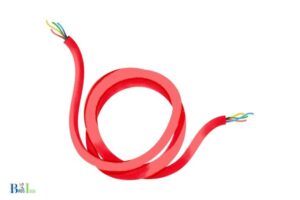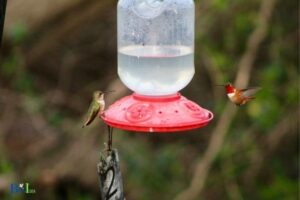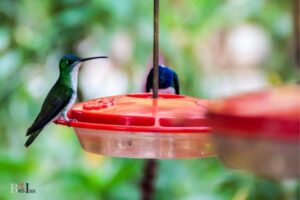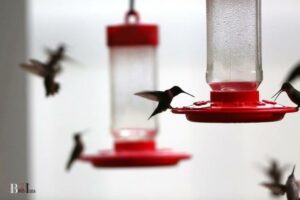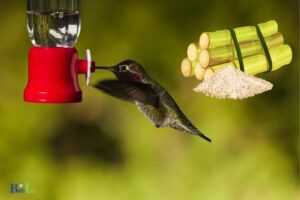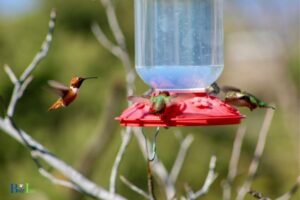How to Fill More Birds Hummingbird Feeder: Step By Step!
To fill more birds hummingbird feeder, follow these steps: Choose the right feeder, prepare a sugar-water solution, clean the feeder regularly, and place the feeder in an attractive location.
Hummingbird feeders are specifically designed to attract and feed these tiny birds, providing them with the necessary energy and nutrients they need to survive.
Filling more birds hummingbird feeder properly will not only attract more hummingbirds but also ensure their health and safety.
To maximize the number of hummingbirds visiting your feeder, choose a model with multiple feeding ports that enables several birds to feed simultaneously.
Opt for a feeder with bright colors, especially red or orange, as these shades naturally attract hummingbirds. Always maintain a clean and refilled feeder with a 4:1 water-to-sugar solution to provide the birds with the energy they need.
Regular cleaning will also ensure the feeder remains free from mold and bacteria, keeping the hummingbirds healthy. Finally, positioning the feeder in a visible, sheltered location near flowers and perching spots will make it even more alluring to these fascinating creatures.
7 Steps to Fill More Birds Hummingbird Feeder:
| Step | Description |
| 1 | Choose the right location: Select an area near flowering plants, away from direct sunlight, and predator-free. |
| 2 | Prepare the nectar: Mix 1 part sugar and 4 parts water, boil, and let it cool down. Avoid using honey, as it can be harmful to hummingbirds. |
| 3 | Clean the feeder: Disassemble and clean the feeder with warm water and a mild soap or vinegar solution. Rinse thoroughly to remove any residue. |
| 4 | Fill the feeder: Pour the cooled-down nectar into the hummingbird feeder, avoiding spills. |
| 5 | Assemble the feeder: Reassemble the feeder, ensuring that all parts are properly attached and secured. |
| 6 | Hang the feeder: Place the feeder in the chosen location, ideally at least 4-5 feet above the ground to prevent predators from reaching it. |
| 7 | Monitor and replenish: Check the feeder regularly for cleanliness and nectar levels. Refill and clean as needed, at least once a week. |
Key Takeaway
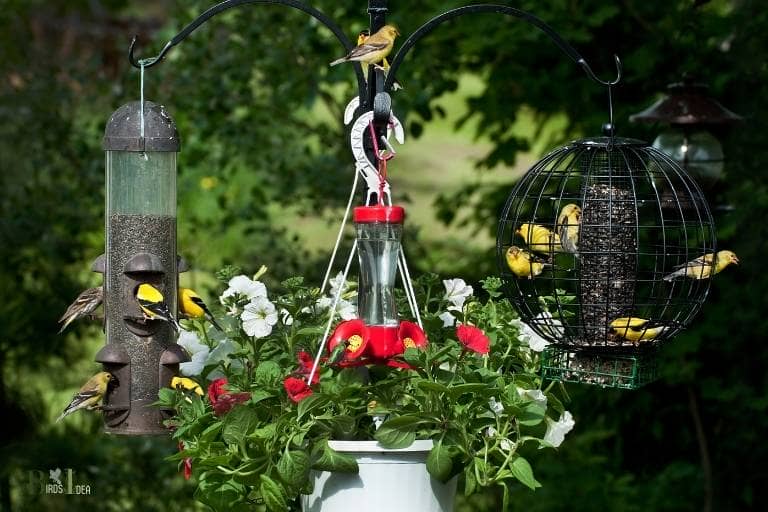
Five Facts About: Fill More Birds Hummingbird Feeder
What Attracts Hummingbirds To Your Garden?
Planting Flowers That Hummingbirds Love
Hummingbirds are attracted to colorful, tubular-shaped flowers that are loaded with nectar. By planting these flowers in your garden, you’ll have a better chance of getting more hummingbirds to visit your feeder.
Here are some of the flowers that hummingbirds love:
- Trumpet honeysuckle: This woody vine produces orange or red blooms that hummingbirds love.
- Fuchsia: This flowering plant produces vibrant, pendulant flowers that come in a variety of colors such as pink, red, and purple.
- Bee balm: This plant produces blooms that are tubular-shaped and come in pink, purple, orange, and red.
- Salvia: This plant produces long, tubular-shaped flowers that come in shades of red, pink, and purple.
- Cardinal flower: This plant produces vibrant, red, tubular-shaped flowers that hummingbirds love.
Ensure that you maintain your flowers by watering them regularly and removing faded blooms to encourage new growth.
Choosing The Right Feeder Location
The location of your hummingbird feeder is crucial in attracting these beautiful birds to your garden. A feeder that is poorly located may go unnoticed by hummingbirds.
Here are some tips on where to place your feeder:
- Ensure that the feeder is placed in a shaded location to prevent the nectar from spoiling quickly due to the sun’s heat.
- Place the feeder at least 5 feet off the ground to prevent ants and other insects from getting to it.
- Keep the feeder away from windows to prevent birds from flying into them.
- Consider placing the feeder near flowering plants and trees that hummingbirds love where they can perch and rest.
Creating A Water Source Nearby
Hummingbirds love to splash and bathe in water. By providing a water source near your feeder, you’ll not only be attracting hummingbirds, but you’ll also help them stay hydrated.
Here are some tips on creating a water source:
- Place a birdbath or shallow water dish near the feeder.
- Keep the water shallow, not more than 2-3 inches deep.
- Add rocks or pebbles to the dish to provide a landing spot for birds to perch on while bathing.
- Change the water frequently to prevent mosquitoes from breeding in it.
Attracting hummingbirds to your garden is all about creating an inviting environment. By planting the right flowers, choosing the right feeder location, and creating a water source nearby, you’ll be sure to attract these beautiful birds to your garden.
How To Choose The Right Feeder And Nectar
Understanding The Best Types Of Feeders For Different Species
Hummingbirds are amazing creatures that come in different species. Each species has unique physical characteristics that require a specialized feeder.
Therefore, it’s crucial to understand and choose the appropriate feeder that will cater to your hummingbird’s specific needs.
Here are some of the best types of feeders for different species of hummingbirds:
- Saucer feeders: These are perfect for larger hummingbirds as they offer enough space and depth to accommodate their beaks. They have shallow reservoir ports where you can pour the nectar.
- Glass bottle feeders: Glass bottle feeders can be used to hold more nectar, and it will last the hummingbirds a little longer. They have feeding ports on the side of the bottle, which makes them more appealing to smaller species of hummingbirds.
- Top-fill feeders: Top-fill feeders are convenient as they make it easy to clean and refill nectar. They are suitable for all types of hummingbirds.
- Window feeders: These are designed to stick to windows, giving you a view of the hummingbirds while they feed. They are perfect for smaller species of hummingbirds.
Making Nectar At Home Vs. Buying Pre-Made
Nectar is a crucial part of a hummingbird’s diet as it provides them with the energy they need to fly. You can either make nectar at home or buy it pre-made from the store.
Here are some things to consider when deciding whether to make it at home or buy it:
- Making nectar at home is affordable and straightforward. All you need is sugar and water. However, it requires preparation time, and you need to make sure you get the right sugar to water ratio.
- Buying pre-made nectar is convenient because it saves time and effort. However, it can be expensive, and it contains preservatives like red dye, which is harmful to hummingbirds.
Dos And Don’Ts Of Nectar Ingredients
When making nectar at home, it’s essential to follow these dos and don’ts to ensure that the nectar is safe and healthy for hummingbirds.
Dos:
- Use granulated sugar only. Do not use brown, raw, or confectioners’ sugar as they contain harmful additives.
- Boil water before mixing it with sugar to kill any bacteria or mold that may be harmful to hummingbirds.
- Change nectar every 3-5 days to prevent fermentation and bacterial growth.
Don’ts:
- Never use honey, artificial sweeteners, or corn syrup as they can cause fungus and harmful bacterial growth.
- Avoid using red dye as it contains harmful chemicals that can harm hummingbirds.
- Do not add any vitamins, supplements, or medication to nectar. Hummingbirds require a balanced diet, and nectar is only a part of it.
Tips For Filling And Refilling Feeders
Hummingbird feeders are a great way to attract these beautiful birds to your yard, but it’s important to keep them full and clean to ensure the birds keep coming back.
Here are some tips for filling and refilling your hummingbird feeders:
How Often You Should Refill
Hummingbirds have a high metabolism and require a steady source of nectar, so it’s important to refill your feeder regularly.
Here are some recommendations:
- In hot weather, refill your feeder every 1-2 days to prevent spoilage
- In cooler weather, you can refill your feeder every 4-5 days.
- If you notice that your feeder is emptying quickly, you may need to refill it more frequently.
Cleaning Feeders To Prevent Mold And Disease
Keeping your feeder clean is important for preventing mold and disease, which can be harmful to hummingbirds.
Here are some best practices for cleaning your feeder:
- Clean your feeder with hot, soapy water every time you refill it
- Use a bottle brush to scrub the inside of the feeder.
- Rinse the feeder thoroughly with hot water to remove all soap residue.
- To disinfect your feeder, soak it in a solution of one part white vinegar to four parts water for 15-20 minutes, then rinse thoroughly.
- Make sure to clean any feeding ports or perches, as they can accumulate mold and bacteria.
Best Practices For Filling And Storing Nectar
Making your own nectar is easy and cost-effective, but it’s important to follow best practices to ensure that it stays fresh and doesn’t spoil.
Here are some tips:
- Mix 1 part white granulated sugar with 4 parts water to make nectar. Tap water is fine, but if your water is high in minerals or chemicals, use distilled or filtered water instead.
- Do not use honey or artificial sweeteners, as they can be harmful to hummingbirds.
- Boil the water before mixing in the sugar to kill any bacteria or mold spores.
- Let the nectar cool to room temperature before filling your feeder.
- Store any leftover nectar in the refrigerator for up to 1 week.
- Do not fill your feeder more than halfway, as the nectar may spoil before the hummingbirds can drink it.
By following these tips, you can keep your hummingbird feeder full and clean, and attract these beautiful birds to your yard all season long.
Identifying And Addressing Common Problems
Most bird enthusiasts face common problems when trying to attract birds to their feeders. If you’re having trouble with ants, bees, wasps, or aggressive birds, there are ways you can tackle them.
Understanding the reasons for these problems can help you find the solutions.
In this section, we will discuss how to handle these common problems.
Ants And Other Pests At The Feeder
Ants and other pests are attracted to the sweet nectar in hummingbird feeders. But there are some easy things you can do to keep them away.
- Install an ant moat: Placing an ant moat on top of the feeder can help prevent ants from reaching the nectar. An ant moat is a small container that you fill with water. When an ant tries to crawl down the feeder, it will get trapped in the water-filled moat.
- Hang the feeder higher: Hanging the feeder higher can make it harder for ants and other crawling pests to reach the nectar.
- Use ant guards: Ant guards are small devices that attach to the hummingbird feeder hanger and create a surface that is difficult for ants to cross.
Bees And Wasps Taking Over
Bees and wasps can be a nuisance at hummingbird feeders. Some are even aggressive and can scare away hummingbirds.
- Move the feeder: If bees and wasps are a recurring issue, moving the feeder to a new location can help. Find an area where there are fewer bees and wasps.
- Provide alternative food sources: Consider providing other sources of food for bees and wasps to keep them away from the hummingbird feeder. Place some fruit or sugar water a distance away from the feeder.
- Use bee guards: Bee guards are small plastic screens that can be inserted into the feeding ports of the hummingbird feeders. They allow the hummingbirds to feed but keep bees and wasps away.
Solutions For Aggressive Birds
Aggressive birds can intimidate other hummingbirds and may try to take over a feeder.
- Install multiple feeders: Installing multiple hummingbird feeders can help reduce competition among the birds. Space them out in different locations in your yard to prevent a single bird from guarding all of them.
- Change up the feeding ports: Swapping out the feeding ports on your feeders can cause aggressive birds to lose their familiarity with the feeder and move on to a different location.
- Provide enough space: Ensure that there is enough space between each feeder and that hummingbirds have space to fly around them without colliding.
By following these tips, you can ensure that your hummingbirds have a safe and enjoyable feeding experience. With a little diligence, you can keep common pests at bay and reduce the stress of aggressive birds.
FAQ On How To Fill More Birds Hummingbird Feeder
How Often Should I Refill My Hummingbird Feeder?
How Do I Clean My Hummingbird Feeder?
What Type Of Nectar Should I Use In My Feeder?
How Can I Attract More Birds To My Hummingbird Feeder?
Conclusion
By following these simple tips, you will soon see an increase in the activity around your hummingbird feeders.
Remember to keep the feeders full and clean, regularly switch up the nectar recipe, utilize bright colors and natural foliage, and position the feeders in areas that are easily accessible for the hummingbirds.
Additionally, it’s important to be patient and consistent in your efforts. With a little dedication and observation, you can create a welcoming environment for these beautiful creatures in your own backyard. Happy birding!

